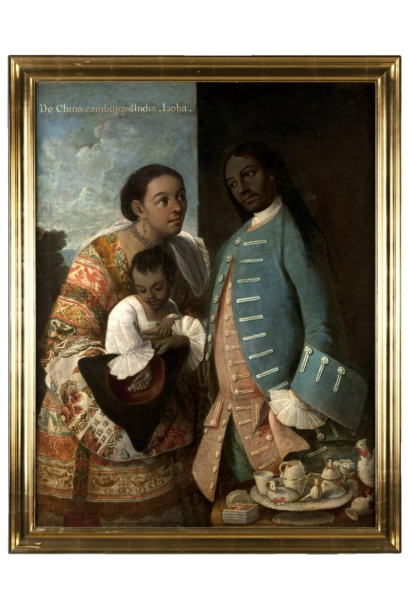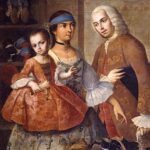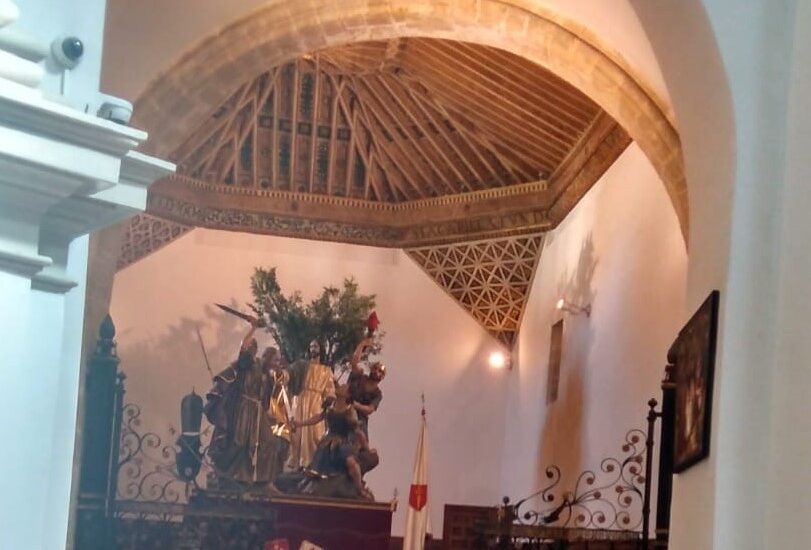
This work, entitled “De español y mestiza, castiza” (“Of Spaniard and Mestiza, Caste”), is a representation of mixed-race or caste painting, and is one of the main sources of information on everyday life in the Viceroyalty of New Spain in the 18th century. These representations are characteristic of a pictorial genre that developed during this century, known as “caste painting”. This genre was usually organised in series of 16 scenes depicting family groups made up of different ethnic groups, in response to the Enlightenment’s desire to order and classify the social structure and to show a self-image of the socio-cultural diversity of New Spain. It is likely that these works were intended for a foreign audience. This particular canvas was painted by Miguel Cabrera in 1763, the painter most recognised by his contemporaries. It depicts a family of high social rank, as can be deduced from the clothing and ornaments worn by the figures, who are standing in front of a shoe shop.
Collection: Images
Project: 4. Family, daily life and social inequality in Europe., 9. Travels and travelers: economic, social and cultural connections.
Chronology: XVIII
Scope: Primary Education, Secondary Education, Baccalaureate, University
Link: http://www.culturaydeporte.gob.es/museodeamerica/coleccion/america-virreinal/colonial/castiza.html
Resource type: Image
Format: Oil on canvas, 132 x 101 cm.
Source: Museo de América (Madrid)
Language: Spanish
Date: 1763
Owner: María del Mar Felices de la Fuente (Modernalia)
Identifier: MAM 00006
Copyright: Museo de América (Madrid). Ministerio de Cultura y Deporte
Abstract: Portrait of a Mestizo Family by Miguel Cabrera (1763), which shows the socio-cultural diversity present in the Viceroyalty of New Spain during the 18th century.
Image
Tags







